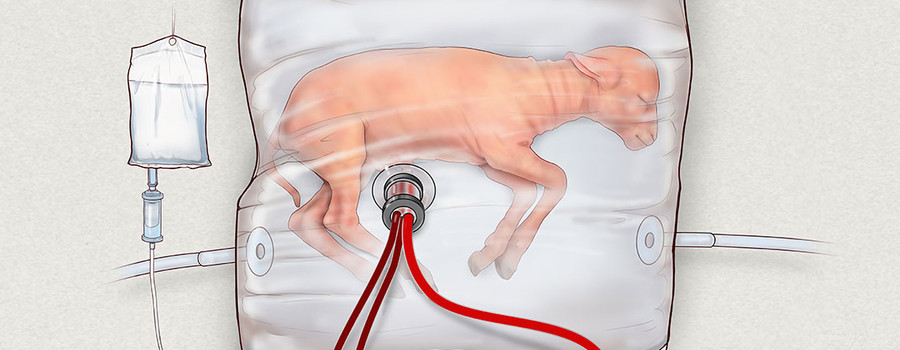Artificial womb? It honestly sounds like something out of a sci-fi film.
Just a while ago it was found that spinach leaves could be turned into human heart tissue. Now, scientists have discovered a way to nurture premature lambs to the late stages of gestation. Think about it. This kind of technology brings hope in the possibility of saving premature human babies within the next three years.
A research team at the Centre for Foetal Research in Philadelphia have successfully tested a prototype artificial womb on two lambs, hoping to have the technology available for humans within two years. The womb imitates a pregnant woman’s uterus, producing the prenatal fluid-filled environment that will allow the foetus to continue breathing as though it were still in the womb.
In replacing the placenta – which supplies the nutrition and oxygen for a healthy fetus – the research team connected oxygenator devices to the umbilical cords of the growing lambs. The team managed to develop a technique where, instead of supplying oxygen into the lambs, their own heartbeats drove the collection of oxygen from the appliance.

This scientific breakthrough can assist in lowing the mortality rate of premature infants born at 24 weeks, which is about 50 per cent. Majority of the issues with premature infants is lung immaturity, which can lead to life-long disabilities in the future. While medical advances managed to develop methods on helping premature babies survive outside the womb to as early as 22 weeks’ gestation, the concept of an artificial womb should protect the foetus from infections.
“Our system could prevent the severe morbidity suffered by extremely premature infants by potentially offering a medical technology that does not currently exist,” said study leader Alan W. Flake, a fetal surgeon at Children’s Hospital of Philadelphia (CHOP).
“These infants have an urgent need for a bridge between the mother’s womb and the outside world,” said Flake.
“If we can develop an extra-uterine system to support growth and organ maturation for only a few weeks, we can dramatically improve outcomes for extremely premature babies.”
One of the leaders of the project, Australian foetal physiologist Marcus Davey is optimistic about this success. However, what are the hopes in bringing this technology to human trials?
Dr David Tingay, from the Murdoch Children’s Research Institute has addressed that this research is still experimental data, but it is promising. They’ve been able to keep the nurtured lambs alive for at least a month, overcoming many of the limitations set against this kind of medical advance. It also has the potential to improve our understading on how to better care for premature infants with an extreme risk of lung disease after birth.
“I think the difficulty will be putting the whole package into a clinical package, and for that reason I think we’re further off than the researchers would hope,” said Tingay.
Science and medicine are making brilliant advancements in all areas. For now, the future of neo-natal intensive care department is looking bright. You can watch the research video below.

